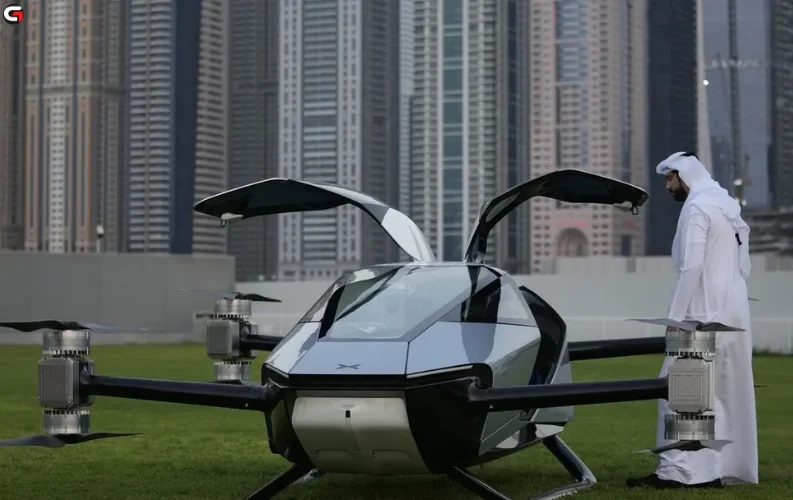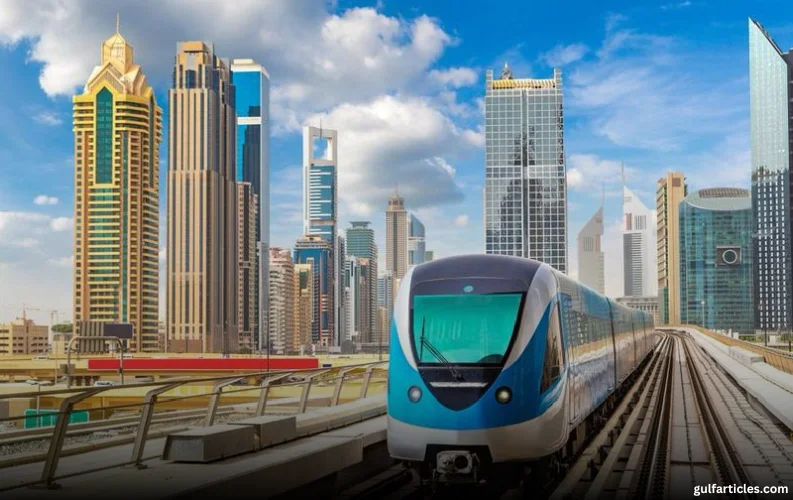Dubai's flying taxi concept has taken a significant leap forward, captivating residents and visitors alike at the Museum of the Future. The full-scale model of the Joby S4, a cutting-edge, electric-powered aerial taxi, has sparked considerable curiosity and enthusiasm for the future of air travel in the city.
The flying taxi, designed to carry up to four passengers, offers a quieter, eco-friendly alternative to traditional helicopters, thanks to its six rotors and electric power source. It can reach speeds of up to 322 km/h and boasts a range of 161 km. The vehicle is equipped with three rounded landing skids and promises a smooth, efficient ride over the city’s bustling streets.
For Dubai residents, the idea of skipping the city’s infamous traffic jams is particularly appealing. A trip from Dubai International Airport to Palm Jumeirah, for example, would take just 12 minutes by air taxi, compared to 45 minutes by car. As one of the most anticipated transportation innovations, the flying taxis are set to launch in 2026, making Dubai the first city in the world to offer such a service.
Residents Weigh In on the Price
Khaleej Times spoke with local residents to gauge their thoughts on using the air taxis once they are operational. Deep Shah, a Dubai resident, expressed his eagerness to try the service and said he would be willing to pay up to Dh150 for a trip. “If it gets you from Al Garhoud to Marina in 10 minutes, Dh150 would be a fair price,” he said, indicating the value he places on time saved in a fast-paced city like Dubai.
However, other residents are more conservative when it comes to price expectations. Hassan Kazemkhani and Maryam Hosseini, a Dubai-based couple, both see the potential of flying taxis for their daily commute. Hassan would be willing to pay a maximum of Dh50 for a trip from Jumeirah to Deira. Maryam, though recognizing the potential cost, believes the service could be worthwhile in situations requiring punctuality. “Sometimes it’s worth it if you need to be somewhere on time and the traffic is heavy,” she said.
Safety Concerns for Some
Despite the excitement surrounding the flying taxi, not everyone is keen to take to the skies. Ellen Cortez, a housewife living in Dubai for over a decade, admitted that she is unlikely to try the service due to concerns about safety. “I’m afraid of heights, so I’m not sure I’d be comfortable in the taxi, but maybe I’ll try it for curiosity’s sake,” she shared.
Dubai’s flying taxi is designed with top-notch safety standards, including a maximum speed of 322 km/h and a battery-powered system that is not only quieter but also reduces emissions. Still, some residents like Ellen remain cautious about the experience.
A Vision for Sustainable and Innovative Transportation
The flying taxis are not only a revolutionary step for transportation in Dubai but also align with the city's broader goals. By 2030, Dubai aims to have 25% of its trips made via self-driving vehicles. The introduction of flying taxis contributes to this ambitious vision while promoting sustainability with zero-emission technology.
With operations expected to begin in the first quarter of 2026, the concept has already created a buzz, and it seems that Dubai is poised to lead the world in air mobility, blending cutting-edge technology with practical solutions for urban mobility.




















